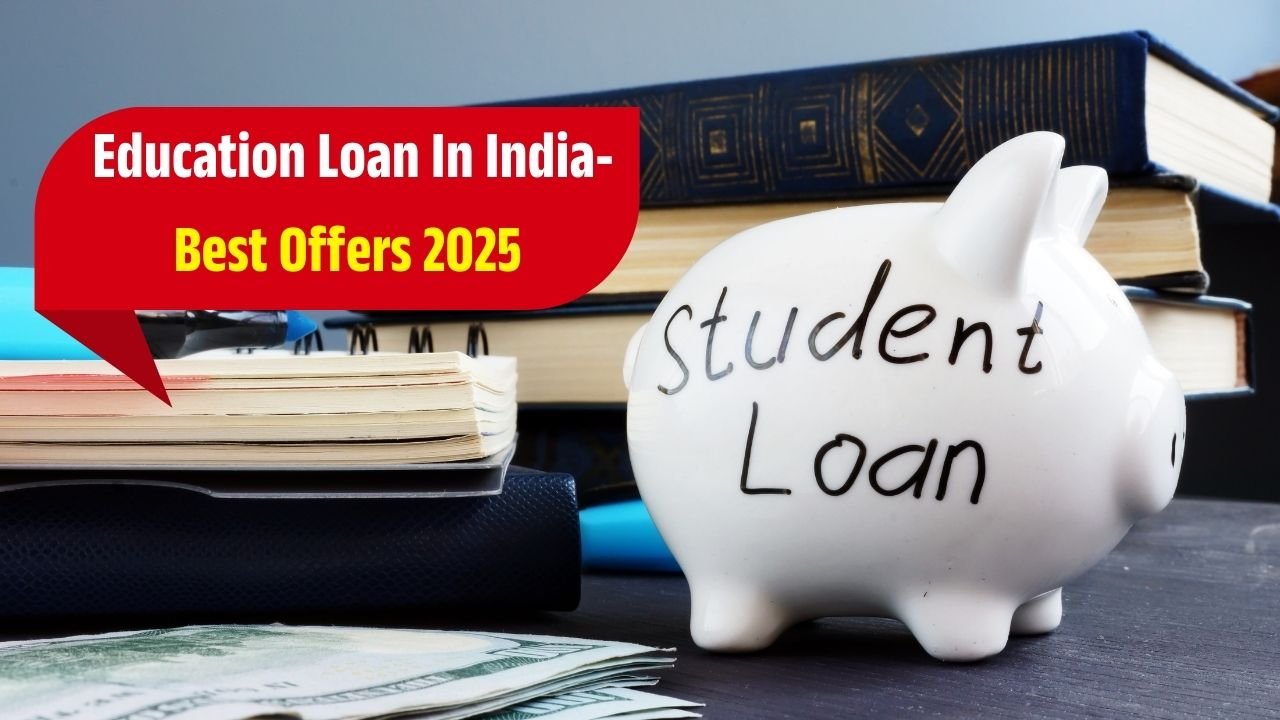Rajesh, a brilliant student from a middle-class family in Pune, scored 95% in his 12th boards and secured admission to IIT Delhi for Computer Science Engineering. The annual fees? ₹2.5 lakhs, not counting hostel and living expenses. His parents, despite their best efforts, couldn’t arrange the entire amount. This scenario plays out in thousands of Indian households every year, where academic excellence meets financial constraints.
Education loans have emerged as the bridge between aspirations and reality, transforming how Indian families approach higher education financing. Unlike previous generations who often had to compromise on quality education due to financial limitations, today’s students have viable pathways to pursue their dreams.
The Current Landscape of Education Financing in India
India’s education loan market has witnessed remarkable growth, reaching approximately ₹75,000 crores in outstanding loans as of 2023. This surge reflects changing attitudes toward educational investment and increased awareness about loan benefits.
The National Sample Survey Office data reveals that nearly 37% of Indian families struggle to fund their children’s higher education through savings alone. This gap has created a robust ecosystem of education financing options, from traditional banks to modern fintech solutions.
Understanding Different Types of Education Loans
Domestic Education Loans These cover studies within India, typically ranging from ₹4 lakhs to ₹1.5 crores depending on the course and institution. Engineering, medical, and management programs often command higher loan amounts due to their career prospects and fee structures.
International Education Loans For students pursuing overseas education, loan amounts can extend up to ₹1.5 crores or even higher. Countries like the USA, UK, Canada, and Australia remain popular destinations, with loans structured to accommodate higher living costs and currency fluctuations.
Skill Development and Professional Course Loans Recognizing the importance of skill-based education, many lenders now offer specialized loans for professional courses, vocational training, and certification programs. These typically range from ₹50,000 to ₹10 lakhs.
Major Players in India’s Education Loan Market
Public Sector Banks
State Bank of India, Bank of Baroda, and Punjab National Bank dominate the education loan space. SBI’s Student Loan Scheme, for instance, offers competitive interest rates starting from 7.75% for loans up to ₹7.5 lakhs. These banks often provide:
- Lower interest rates for merit-based admissions
- Flexible repayment schedules
- Moratorium periods during study and job search
- Special schemes for economically weaker sections
Private Banks and NBFCs
HDFC Credila, Axis Bank, and ICICI Bank have carved significant market share by offering faster processing and customer-centric services. Private lenders typically provide:
- Quick loan approvals (sometimes within 48 hours)
- Higher loan amounts with minimal documentation
- Personalized service and dedicated relationship managers
- Online application and tracking systems
Emerging Fintech Solutions
Companies like Propelld, Auxilo, and InCred Education Finance are revolutionizing education lending through technology-driven approaches. They offer:
- Algorithm-based credit assessments
- Flexible EMI structures
- Career-linked repayment options
- Digital-first application processes
Eligibility Criteria and Documentation
Most lenders follow similar eligibility frameworks, though specific requirements may vary:
For Students:
- Indian citizenship or permanent residency
- Admission confirmation from recognized institutions
- Age typically between 16-35 years
- Academic performance criteria (usually 50% or above in qualifying exams)
For Co-applicants:
- Stable income source (salary, business, or profession)
- Good credit history and score (preferably above 650)
- Age limits (usually up to 65 years at loan maturity)
Essential Documentation:
- Admission letters and fee structures
- Academic transcripts and certificates
- Income proofs of co-applicants (salary slips, ITR, bank statements)
- Identity and address proofs
- Collateral documents (if applicable)
Interest Rates and Repayment Structures
Education loan interest rates in India currently range from 7.75% to 15%, influenced by factors like:
- Loan amount and tenure
- Course type and institution ranking
- Applicant’s academic performance
- Co-applicant’s financial profile
- Security provided (secured vs. unsecured loans)
Repayment Options
Modern lenders offer flexible repayment structures:
Moratorium Period: Students typically get 6 months to 1 year after course completion to find employment before EMI payments begin.
Step-up EMI: Payments start low and gradually increase, aligning with expected career growth and salary increments.
Income-based Repayment: Some lenders link EMI amounts to the borrower’s actual income, providing relief during unemployment or low-income periods.
Government Schemes and Support Systems
The Central and state governments have introduced several initiatives to make education more accessible:
Central Sector Interest Subsidy Scheme: Provides complete interest subsidy during the moratorium period for students from economically weaker sections (family income below ₹4.5 lakhs annually).
Dr. A.P.J. Abdul Kalam Interest Subsidy Scheme: Offers interest subsidy for technical education loans, encouraging STEM education among economically disadvantaged students.
Pradhan Mantri Vidya Lakshmi Yojana: A digital platform connecting students, banks, and government schemes, simplifying the application process and ensuring transparency.
Tax Benefits and Financial Advantages
Education loans offer significant tax benefits under Section 80E of the Income Tax Act:
- Complete deduction of interest paid (no upper limit)
- Deduction available for 8 years or until complete repayment
- Benefits extend to loans for spouse, children, or students for whom the taxpayer is legal guardian
For a loan with ₹50,000 annual interest payment, a taxpayer in the 30% tax bracket saves ₹15,000 annually, substantially reducing the effective interest cost.
Smart Strategies for Education Loan Management
Compare Before You Commit: Interest rate differences of even 0.5% can result in significant savings over the loan tenure. A ₹10 lakh loan at 9% versus 9.5% over 10 years saves approximately ₹25,000 in total interest.
Leverage Your Academic Performance: Many banks offer interest rate concessions for students with exceptional academic records or admissions to premier institutions.
Consider Part-payment Options: Whenever possible, make partial prepayments during the course or immediately after getting a job. This reduces the principal amount and subsequent interest burden.
Maintain a Good Credit Score: Your education loan repayment history significantly impacts your future creditworthiness, affecting everything from personal loans to home mortgages.
Challenges and Solutions in Education Financing
Despite the growth in education lending, several challenges persist:
Processing Delays: Traditional banks often take 15-30 days for loan approval, causing admission deadline stress. Solution: Apply early and consider private lenders or fintech companies for faster processing.
Collateral Requirements: For loans above ₹7.5 lakhs, most lenders require collateral, which many families cannot provide. Solution: Explore guarantee schemes or opt for multiple smaller loans from different sources.
Limited Coverage: Some courses and institutions aren’t recognized by traditional lenders. Solution: Research lender-specific approved course lists and consider specialized education finance companies.
Future Trends in Education Financing
The education loan landscape is evolving rapidly with several emerging trends:
Technology Integration: AI-powered credit assessments, blockchain for document verification, and mobile-first applications are becoming standard.
Outcome-based Lending: Some lenders are experimenting with repayment structures linked to actual career outcomes and salary achievements.
International Partnerships: Banks are partnering with overseas institutions to offer integrated financial packages including forex cards, international accounts, and insurance.
Making the Right Choice
Selecting an education loan requires careful evaluation of multiple factors beyond just interest rates. Consider the lender’s reputation, customer service quality, processing time, and flexibility in repayment options.
Remember, an education loan isn’t just a financial product—it’s an investment in your future. The knowledge, skills, and network you build through quality education often provide returns far exceeding the loan costs.
Conclusion: Investing in Tomorrow
Education loans have democratized access to quality higher education in India, enabling millions of students to pursue their academic dreams regardless of their family’s immediate financial capacity. As Rajesh from our opening story discovered, his IIT education, funded through an education loan, led to a lucrative career in technology, allowing him to repay his loan comfortably while building a strong financial foundation.
The key lies in making informed decisions, understanding the terms completely, and viewing the loan as an investment rather than a burden. With proper planning and the right loan product, students can focus on their studies while building toward a bright professional future.
Whether you’re considering engineering, medicine, management, or any specialized field, education loans provide the financial bridge to transform your aspirations into achievements. The journey might begin with a loan application, but it leads to a lifetime of opportunities and success.
















